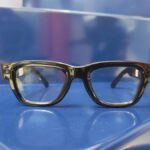On December 6, 2020, the Hayabusa2 spacecraft dropped off pristine samples from asteroid Ryugu in the Australian outback, becoming the world’s second asteroid sample return mission, after the first Hayabusa mission returned dusty samples from asteroid Itokawa in 2010. But Hayabusa2 still has more to offer.
That same spacecraft is currently on its way to another distant space rock, aiming to snag more samples to help scientists compile the solar system’s origin story. Recent observations of the asteroid, however, reveal that Hayabusa2 might not be able to touch down on its new target.
Asteroid 1998 KY26 is a small, lumpy near-Earth object thought to contain about a million gallons of water. It rotates so quickly that a day on the rock ends almost as soon as it begins, according to NASA. Hayabusa2 is set to rendezvous with the asteroid in 2031 as part of its extended mission to collect more dust and rock straight from the source.
Now, using multiple observatories around the world, astronomers gathered more data on Hayabusa2’s new target and found that it is nearly three times smaller and spinning much faster than originally thought, according to a new paper published in Nature Communications.
Not clear for landing
The researchers behind the new paper combined the recent observations with previous radar data, revealing that the asteroid is a mere 36 feet (11 meters) wide, as opposed to 98 feet (30 meters). What’s more, the asteroid is spinning about twice as fast as earlier data suggested.
“We found that the reality of the object is completely different from what it was previously described as,” Toni Santana-Ros, a researcher from the University of Alicante, Spain, and lead author of the new paper, said in a statement. “One day on this asteroid lasts only five minutes!”
Hayabusa2’s first target measured at nearly 3,000 feet (900 meters) wide. The spacecraft landed on asteroid Ryugu on February 22, 2019, for the first time, then returned for a second touchdown in July 2019 to collect subsurface samples from a crater it had created with its first landing. Shortly before dropping off its samples on Earth, Japan’s space agency (JAXA) announced an extension to Hayabusa2’s mission and a lucky second target.
A bigger challenge awaits
Unlike its first target, however, Hayabusa2’s second landing will prove far more challenging due to the asteroid’s small size and fast rotation. The team behind the new study used the European Southern Observatory’s Very Large Telescope and other instruments to observe 1998 KY26 in preparation for the mission’s upcoming encounter.
“The amazing story here is that we found that the size of the asteroid is comparable to the size of the spacecraft that is going to visit it! And we were able to characterize such a small object using our telescopes, which means that we can do it for other objects in the future,” Santana-Ros said. “Our methods could have an impact on the plans for future near-Earth asteroid exploration or even asteroid mining.”
This has the makings of a very interesting rendezvous! Now we just have to wait—impatiently—for 2031 to arrive.
Read the full article here












